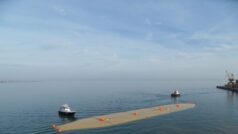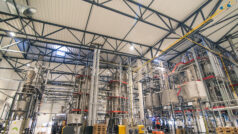Recent BIR World Recycling Convention & Exhibition in Hong Kong was held from 22 to 24 May 2017. These comments from the BIR Stainless Steel & Special Alloys Committee board member were contained in his review of country and regional market reports submitted to the committee’s new World Mirror publication, launched at its latest gathering in Hong Kong on May 22 which was chaired by Joost van Kleef of Oryx Stainless BV of the Netherlands.
On a more positive note, guest speaker and leading sectoral analyst Markus Moll of Steel & Metals Market Research in Austria expressed the view that nickel prices would recover to around US$ 10,000 per tonne by the end of 2017. He also predicted that global production of crude stainless steel would surge 4.8% from just under 47m tonnes in 2016 to 49.2m tonnes this year, with a further increase of 3.6% to 50.94m tonnes anticipated for 2018. According to his forecasts, stainless production in China would follow up its 10.7% jump in 2016 with a further hike of 5% this year to 26.72m tonnes and relatively small growth of 2.7% in 2018 to 27.44m tonnes.
Stainless steel demand was performing well in many end-use areas – including notably automotive and appliances, delegates were told.
Mr Moll contended that the global 18/8 scrap ratio had dipped to a long-time low of 44% last year from 49.3% in 2015. Intercontinental stainless scrap trading accounted for only 8% of the market in 2016, suggesting this was “increasingly a regional business”. The analyst went on to note signs that substitution of 300 series stainless appeared to be stalling or even reversing, predicting that its share of global stainless output would climb from 54.1% in 2016 to 55.2% by 2021 whereas the 200 series would suffer a fall from 20.8% to 18.7% over the same period.
Fellow guest speaker Adam Minter, a freelance journalist who writes a column on Asia, technology and business for Bloomberg View and who has carried out regular assignments for leading recycling industry magazines, focused on a major trend away from mono-polar scrap trading – when material generally flowed from the developed to the developing world – towards “multi-polar” trading whereby “everyone trades with everyone”. This shift “will be a challenge for established players” and could entail “tighter margins” and “tougher business”, he ventured.
With China’s futures exchanges set to allow non-resident entities to hedge and trade, Mr Minter was anticipating a trading migration from the London Metal Exchange to the Shanghai Futures Exchange.










